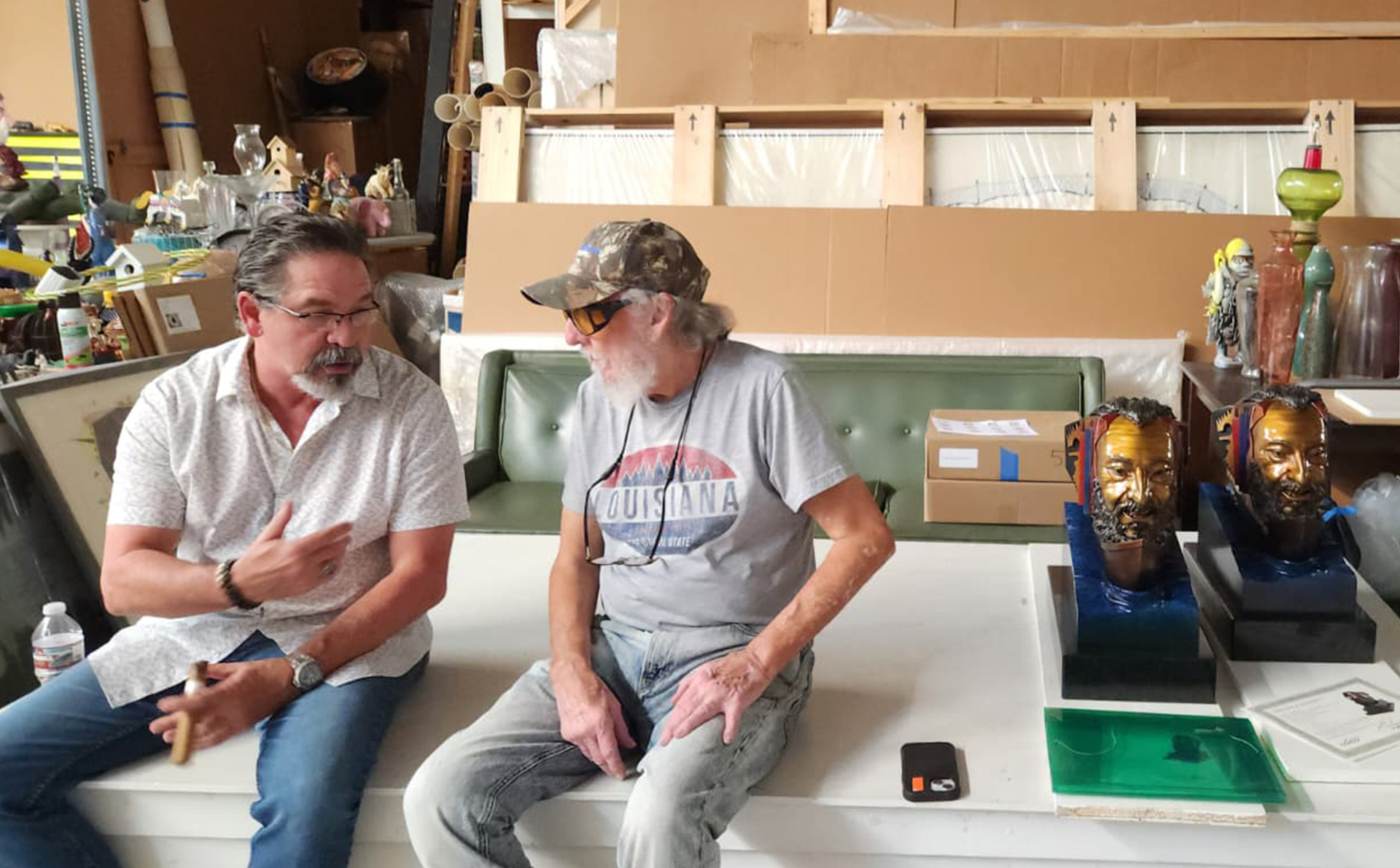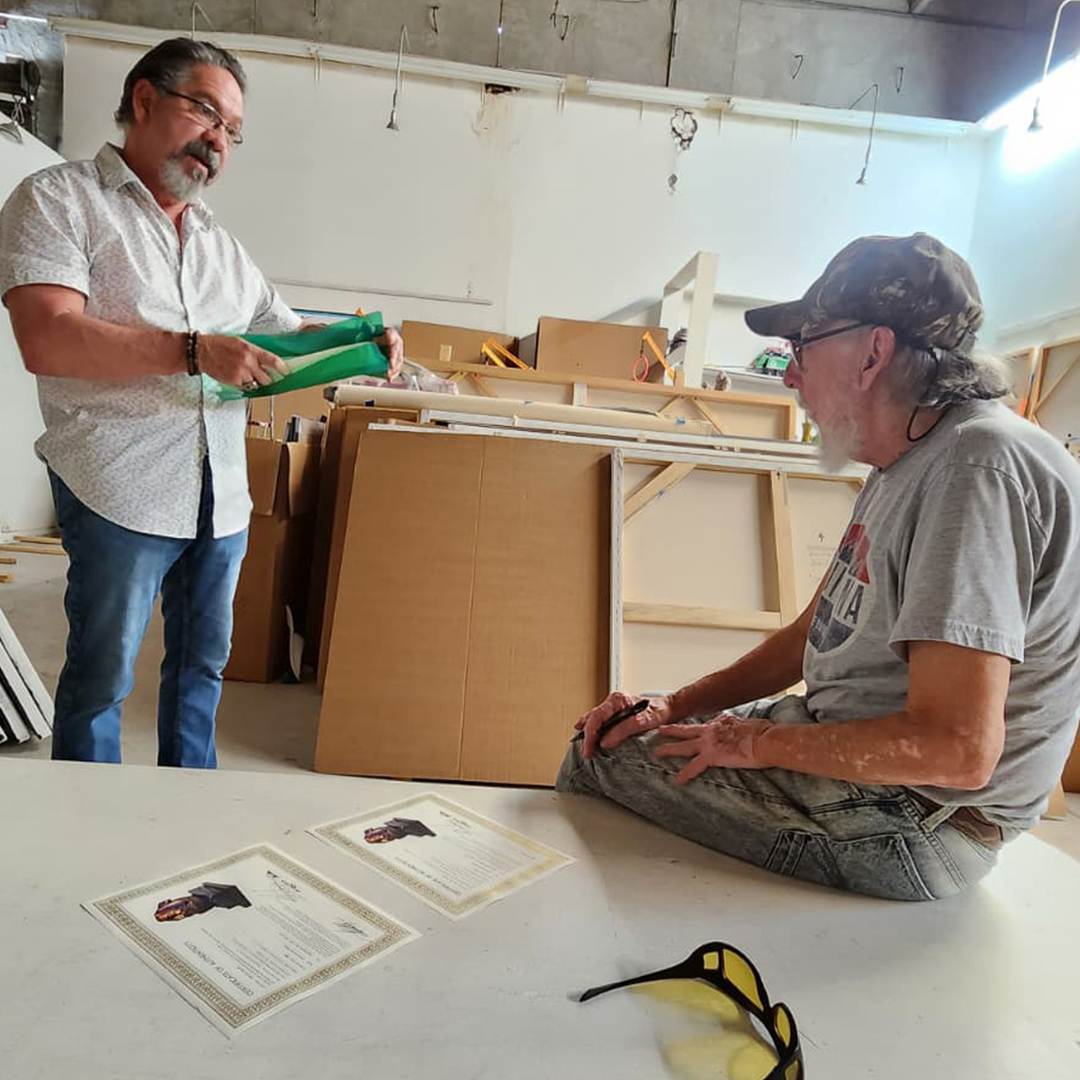


Leonardo Rodríguez, founder and director of the Museum of Contemporary Art of the Americas (MoCAA) in Kendall, Miami, recently visited the studio of renowned Cuban artist Luis Cruz Azaceta, accompanied by Ivonne Ferrer, deputy director of MoCAA and director of the Fine Arts Ceramic Center.
The central purpose of the visit was the delivery of two bronze sculptures, cast by the Bronze Foundry Art Foundation, an institution unwavering in its commitment to transmitting technical knowledge and sustaining the cultural value of bronze casting. Azaceta received the pieces, examined their finishes with the meticulous eye that distinguishes him, and certified them in recognition of their technical refinement, precision, and finish.
The sculptures are reduced versions of the monumental piece permanently installed on the mezzanine of MoCAA. The original work—cast in the ancestral lost-wax technique and enriched with a radiant and intense palette—measures 31 x 32 x 17 inches. Both the monumental piece and its more intimate replicas (19 x 10 x 19 inches) derive from the series Postcard from Havana No. 21 (June 2022), an acrylic with colored pencil on canvas (48 x 72 inches) that belongs to the Rodríguez Collection, the essential core of the museum’s permanent exhibition.

It is worth recalling that the Bronze Foundry Art Foundation is not merely a technical workshop, but a cultural force that trains artists, refines methods of casting, and opens a space for collaboration and exhibition. Its educational and community-driven mission makes it a key actor in the renewal of bronze art, cultivating a new generation of creators and, in doing so, a broader sensibility toward this sculptural language.
In the case of Luis Cruz Azaceta, his name is spoken with reverence within the Cuban artistic community. For readers in other geographies, it bears remembering that Azaceta was born in Havana in 1942, went into exile in 1960, and trained at the School of Visual Arts in New York. Since the late 1970s, his work has functioned as a moral and ethical seismograph of American society. His early series addressed urban violence, the AIDS epidemic, and racism; later his vision expanded to a world unsettled by war, terrorism, displacement, and crises of identity and economy.
Azaceta has made experimentation his method and contemporary disquiet his inexhaustible theme. He does not hesitate to combine unexpected media—such as photographs mounted on twisted metal studs—nor to pursue parallel series in which each material dictates its own visual grammar. His work, vast and prolific, is above all a way of facing the world: a lucid acceptance that change is inevitable, that chaos is part of the process, and that we are all implicated in the weave of time and reality.

He has exhibited extensively, both nationally and internationally, and his trajectory has been recognized with grants from the Guggenheim Memorial Foundation, the National Endowment for the Arts, the New York Foundation for the Arts, and the Joan Mitchell Foundation, among others. His works reside in the collections of the Metropolitan Museum of Art, the Museum of Modern Art, and the Whitney Museum of Art in New York; the Smithsonian American Art Museum in Washington, D.C.; the Museo de Bellas Artes in Caracas; and MARCO in Monterrey, among other prestigious institutions.
Thus, between the intimate gesture of certifying two sculptures and the universal resonance of his oeuvre, Azaceta reminds us once again that art is neither refuge nor escape, but a way of confronting, head-on, the shared chaos that defines us.

